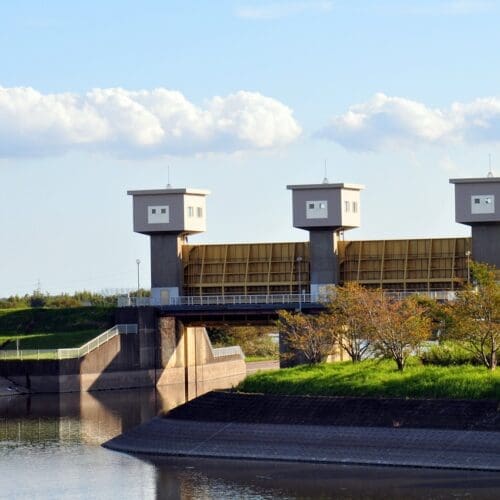Washed-up, sewage and the Supreme Court: Manchester Ship Canal Company v United Utilities
July 2024Introduction
This month’s Supreme Court (‘SC’) ruling in Manchester Ship Canal Company Ltd v United Utilities Water Ltd (No. 2) [2024] UKSC 22 marks the much-anticipated conclusion of the long-running litigation between Manchester Ship Canal Company Ltd (‘MSCC’) and United Utilities (‘UU’), the sewerage undertaker for North-West England. It is also likely to mark the beginning of a rush of future complaints or claims against water utility providers, with commentators warning this decision may open the proverbial ‘floodgates’.[1]
The SC’s ruling is both timely and topical. It comes amidst a backdrop of press attention and public and activist anger over the performance of water utility providers in the UK. Last year, for example, over 4 million hours of raw sewage were discharged into UK waterways, reflecting an increase of 129% from 2022.[2] The impacts are already being felt around the country, only 14% of English rivers meet good ecological status;[3] and 75% pose a serious risk to human health.[4] The SC’s decision in this case will empower activists and environmentalists, and it will also increase the litigation risk faced by UK-based water companies.
Background
By way of context, the overarching dispute between the parties concerned whether UU required MSCC’s consent to discharge foul water into the canal, and to pay a licence fee, or alternatively it could pollute without consent and free of charge. However, this decision has wider significance, as set out below.
In 2010, MSCC, the owner of the Manchester Ship Canal, threatened proceedings against UU following unauthorised discharges of untreated sewage by UU into Manchester’s longest canal. Specifically, MSCC threatened to bring a private law claim in nuisance and/or trespass.
In response, UU applied to the court for a declaration to say that MSCC had no cause of action in nuisance, unless MSCC could prove negligence or deliberate wrongdoing. In its application, UU argued that such an action is barred because of incompatibility with the legislative scheme set out by the Water Industry Act 1991 (‘WIA’).
The High Court upheld UU’s application and made the relevant declaration. MSCC appealed. Various groups with an interest in the health of the UK’s waterways made written submissions. MSCC’s appeal failed in the Court of Appeal on 27 June 2022. The matter then came before the SC, much to the anticipation of industry onlookers.
Key Question
The overarching question for the SC was whether common law actions in nuisance or trespass are available to owners of watercourses where sewage undertakers pollute their waters with discharges of untreated, foul water, even in the absence of negligence or wrongdoing. The specific question was whether such an action was excluded by the WIA’s existing enforcement regime.
Decision
After careful statutory analysis, the SC unanimously allowed MSCC’s appeal. The starting point was MSCC’s “fundamental right” to peaceful enjoyment of one’s own property. This includes a right to preserve the quality of the water. It reasoned that any statutory interference with that right (including by the WIA) requires express language to the contrary. This is of course an extremely high hurdle, and it follows that Parliament would not authorise interference with such a fundamental right, if it could be avoided.
The SC then highlighted the difference between authorised, lawful interferences with the right to peaceful enjoyment of one’s property and unauthorised, unlawful interferences. Lawful interferences are permitted by statute or are granted statutory immunity, whereas unlawful interferences do not have such statutory protection. The SC said that a sewage undertaker such as UU would therefore be just as liable as any other person for an unlawful interference. UU did not dispute that the relevant discharges were unlawful and unauthorised, indeed, it was central to its case (see more below).
Unsurprisingly, the WIA does not expressly authorise UU to discharge untreated effluent into the canal. UU is however permitted to use the canal’s outfalls under section 116, WIA. The SC explained that section 116 WIA does not exist in isolation, and that it is subject to various other, express provisions that offer safeguards for watercourses and water quality.[5] The SC found that Parliament’s intention to protect UK watercourses was therefore explicit throughout the WIA.
The SC further found that the WIA does not impliedly authorise such unlawful interference either. This is because the discharges were not an unavoidable or inevitable result of UU carrying out its statutory duties. After all, it was accepted that the pollution would not have occurred had UU invested in better infrastructure. Accordingly, the WIA did not, in principle, prevent MSCC from commencing an action in nuisance and/or trespass when the canal was polluted by foul water discharges by UU, even where there was no negligence or deliberate misconduct.
UU had asserted that MSCC had no cause of action because the only means of avoiding the pollution was to build more sewers, a matter reserved for the Secretary of State or the regulator, Ofwat. Citing Marcic v Thames Water Utilities Ltd [2003] UKHL 66 (‘Marcic’), UU argued that it was not for the courts to determine circumstances where new infrastructure is to be provided. According to UU, allowing private common law claims would therefore conflict with the relevant regulatory regime.
The SC rejected this contention, finding that Parliament did not intend for the WIA to exclude a watercourse owner’s common law right to enjoyment of its property (i.e., the canal). The SC gave several reasons for this following an analysis of the WIA and the history of water legislation in the UK (both pre-and post-privatisation):
- The WIA allows for arbitration, which suggests an alternative means of complaint is available.
- The WIA implements a statutory compensation scheme for lawful interferences, but not for unlawful interferences. The SC therefore inferred that the common law action is retained for unlawful interferences, otherwise claimants would have no remedy under the WIA, “which would be anomalous” and “surprising”.[6] Moreover, such a framework would clearly favour unlawful interferences over lawful interferences, which the SC further ruled “perverse”.[7]
- The WIA is a complex, consolidation statute – it is not intended to enact major changes to existing legislation. Yet the exclusion of the common law action for watercourse owners, as argued by UU, would resemble a substantial change to the law. It would therefore be unusual for Parliament to implement such a significant change via the (consolidation only) WIA. Moreover, the SC reasoned that even if such a change was intended to be captured by the WIA, that is not made explicit. It would have to be implied into the legislation. The SC therefore concluded that Parliament did not intend for such a significant change to be implemented via a consolidation statute, and certainly not on an indirect, implied basis. Such changes would be made explicit and that was not the case here.
The SC’s judgment also includes analysis of the law of nuisance and the available remedies, tortious liability, and the applicable case law on the discharge of foul water into watercourses. The earlier court decisions had applied Marcic as authority to exclude common law nuisance claims in circumstances where this was caused by inadequacies in the applicable sewerage infrastructure. The SC deemed this to be a misreading of Marcic (which was then distinguished from the facts in this case).
This landmark decision is at its heart a common sense ruling on statutory interpretation. It represents a reiteration of the well-established principle that “bodies exercising statutory powers enjoy no dispensation from the ordinary law of tort in so far as statute gives it to them.”[8] In this case, the SC agreed that UU’s actions were not subject to any special statutory protection and that MSCC was therefore capable of enforcing its property rights which are retained and operate separately from the WIA.
Commentary
The SC’s decision will undoubtedly have major implications for water utility providers in the UK. It will impact investor confidence, making finance more expensive. That is unfortunate given the high levels of investment required across UK sewage infrastructures, a fact that was recognised by the SC and UU in the claim here.
The SC decision arrives at a time when water utility providers are more exposed to litigation than ever before. Crucially, environmental groups are now much more organised. Such groups have historically focused on calling for better transparency and engagement with environmental metrics and reporting. Now, more access to funding and heightened public interest has empowered such groups to be able to conduct expensive litigation as well.[9] Environmental organisations now employ lawyers to monitor for and take legal action against poorly performing companies. This rise in so-called strategic litigation is a clear risk facing water companies and one that is now magnified following the SC’s decision.
With this ruling in mind, utility providers are likely to be encouraged to carry out a review of their assets and relevant risk register/s. The increased litigation risk may also require a reassessment of existing and/or potential claims, as well as reviews of the most problematic infrastructure or outfalls. We may also see attempts by utility companies to seek to pass on any associated costs to suppliers and/or customers within the bounds of the legal and regulatory regime.
Equally, construction professionals engaged by water companies may face changes to their construction contracts and professional appointments, including ancillary construction documents (such as collateral warranties) as a result. For example, parties may place increased emphasis on the negotiation of contract terms, insurance requirements and, specifically, any obligations or indemnities linked to compliance with statutory/regulatory requirements, pollution, and environmental harm.
Further, there are potential insurance implications in relation to the likely rise in nuisance and trespass claims. Such claims will need to be understood in light of applicable terms in public liability, and/or environmental impairment liability insurance policies as well as other policies providing pollution and contamination indemnities. Insurance companies may well now be giving consideration to the extent of insurance cover available.
Water utility providers will not only face greater scrutiny from investors and environmental groups. This ruling will also have major implications for the utilities sector at a time when public attention is firmly on its waterways. Many will be aware of the recent and sustained media coverage of excessive discharges of sewage by water companies. This reporting will no doubt amplify what would otherwise be an ‘isolated’ ruling, scrutinised by utilities providers, lawyers, and industry journalists (but not many others). More broadly, utilities providers must accept that, for the time being at least, their actions will be subject to more scrutiny (including judicial scrutiny), and continued risks that will need to be actively managed and mitigated, more than ever before.
[1] Water companies could face raft of legal challenges after landmark sewage ruling (2 July 2024), Good Law Project https://goodlawproject.org/supreme-court-opens-the-floodgates-for-sewage-dumping-challenges/
[2] 4m hours of raw sewage discharges in England in 2023, data expected to show (May 2024), The Guardian https://www.theguardian.com/business/2024/mar/26/4m-hours-of-raw-sewage-discharges-in-england-last-year-figures-expected-to-show
[3] p11, House of Commons Committee Report, Water Quality in Rivers Report (13 January 2022) https://committees.parliament.uk/publications/8460/documents/88412/default/
[4] See Surfers against Sewage, https://www.sas.org.uk/water-quality/water-quality-facts-and-figures/
[5] Sections 117(5) – (6), 180, 186(3), WIA
[6] Para 119, Judgment
[7] Para 121, Judgment
[8] Para 15, Judgment
[9] See Beale & Co article on the so-called ‘Swiss Grannies’ case: Senior Swiss Women Pave The Way! Landmark ruling confirms that insufficient climate action taken by a government also violates humans rights. Corporates next ? | Beale & Co (beale-law.com); and on the outcome of Finch v Surrey County Council in June 2024: Finch v Surrey County Council – Supreme Court issues major decision on environmental impact assessment requirements: all’s well that ends well? | Beale & Co (beale-law.com)
Download PDF









